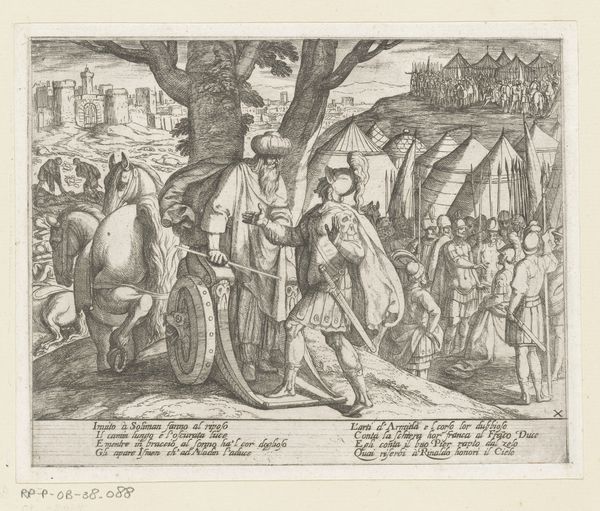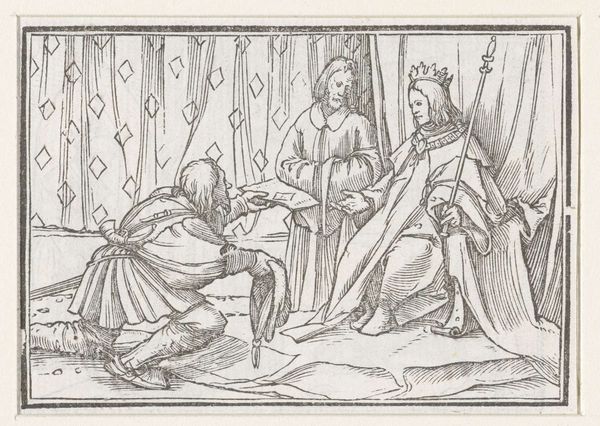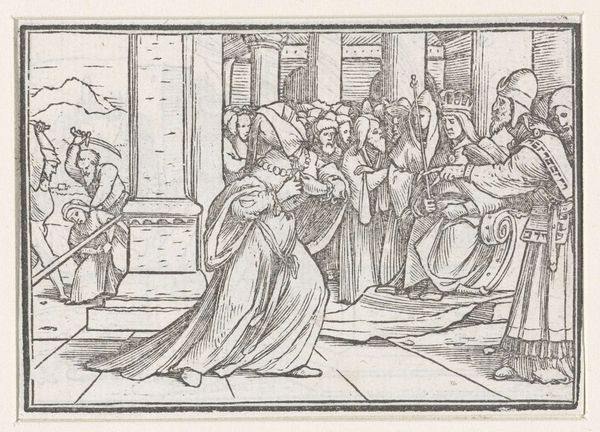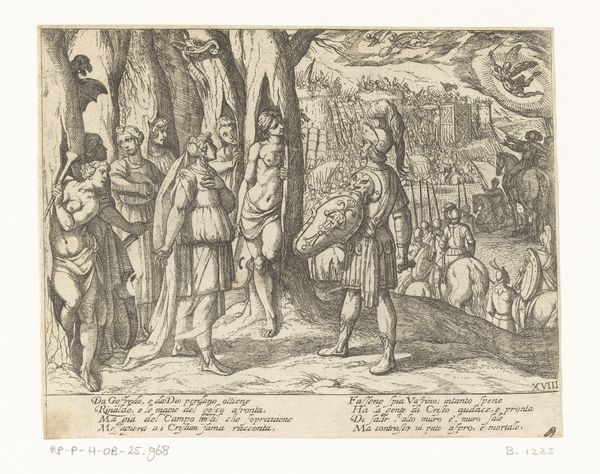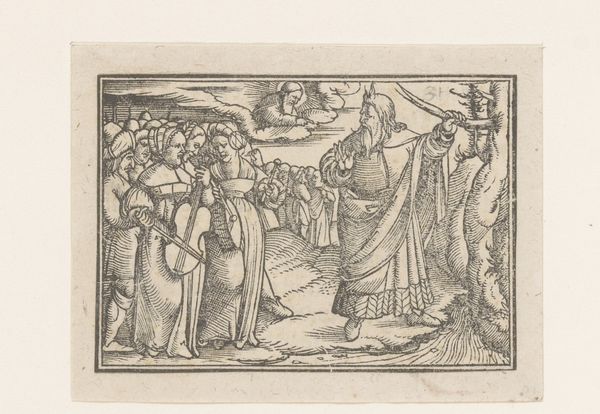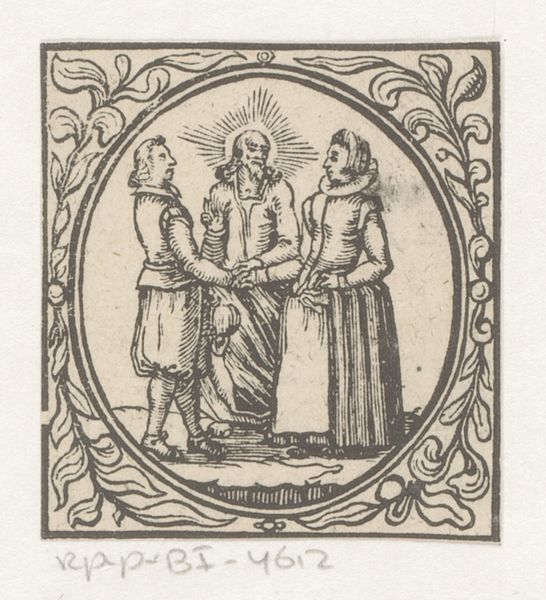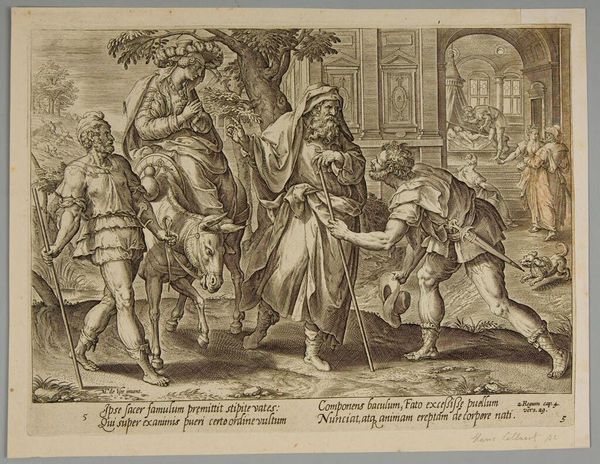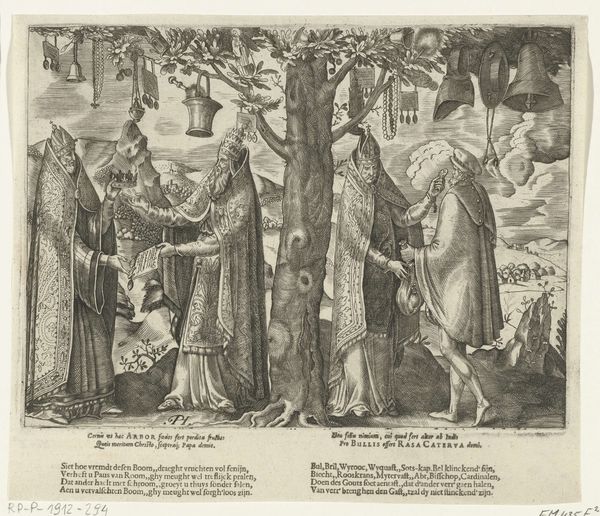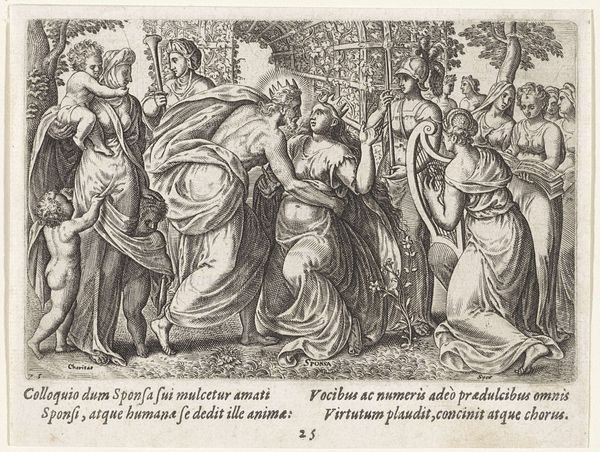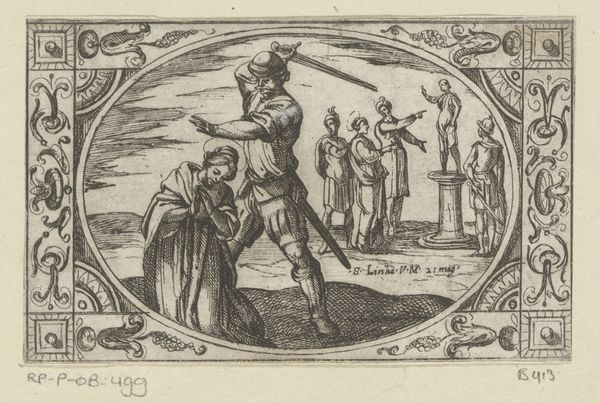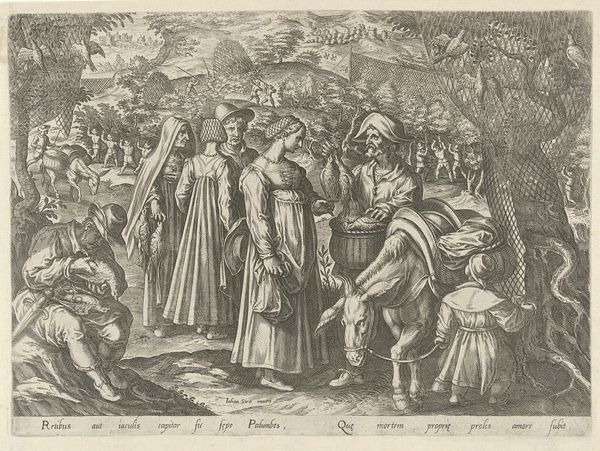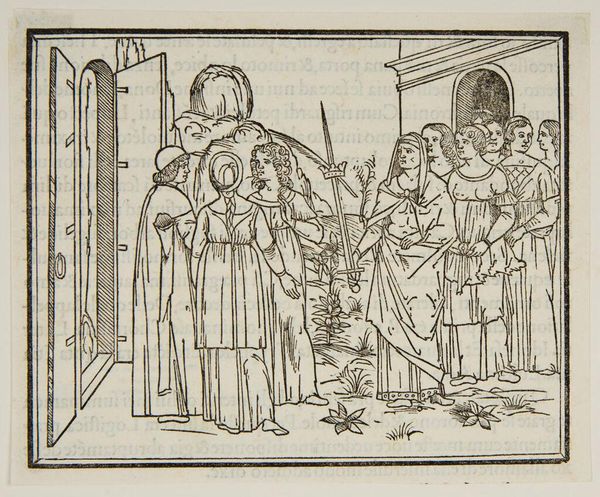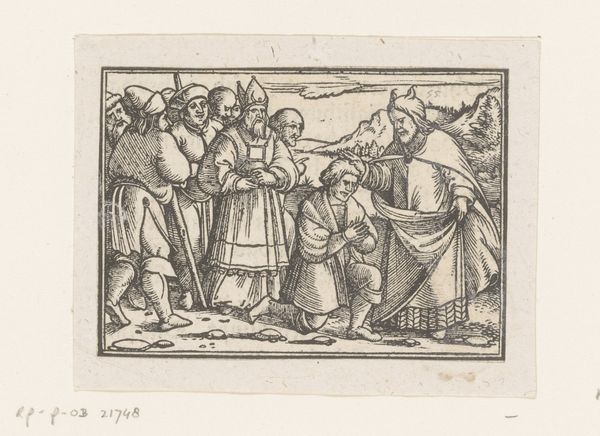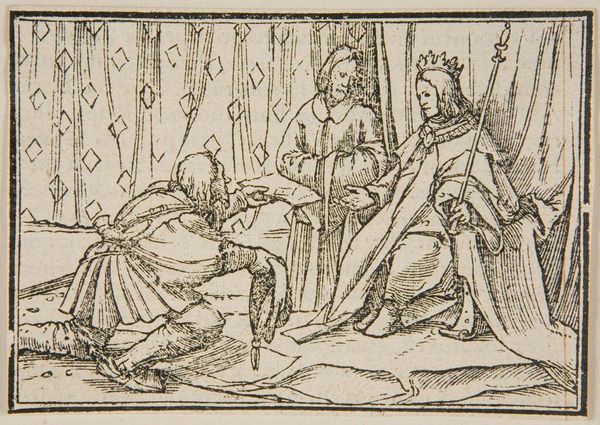
print, engraving
# print
#
figuration
#
ink line art
#
line
#
history-painting
#
northern-renaissance
#
engraving
Dimensions: height 60 mm, width 85 mm, height 79 mm, width 91 mm
Copyright: Rijks Museum: Open Domain
This small woodcut was made by Hans Holbein the Younger, during the early 16th century. The image is a testament to the skill and labor that went into printmaking at this time. The process begins with a block of wood, likely a hardwood such as beech or fruitwood, carefully prepared and smoothed. Using specialized tools, Holbein would have meticulously carved away the areas of the block that he wanted to appear white in the final print, leaving the lines of the composition standing in relief. The act of carving itself is physically demanding, requiring precision and control. Once the block was complete, it would be inked and pressed onto paper, transferring the image. The stark contrast between black and white, achieved through the carving process, lends the scene a dramatic quality. Holbein’s masterful handling of the woodcut technique elevates it beyond mere reproduction, transforming it into a work of art that speaks to the values of craftsmanship and the enduring power of the printed image. This artwork reminds us of the labor and ingenuity embedded in every step of its creation.
Comments
No comments
Be the first to comment and join the conversation on the ultimate creative platform.
